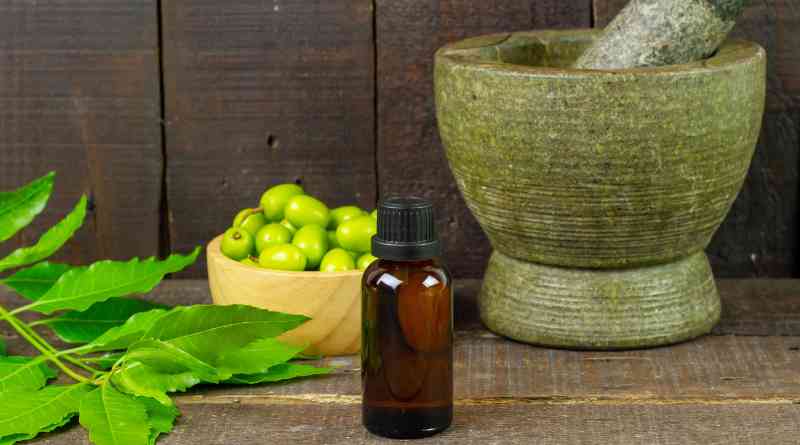Wellhealth Ayurvedic Health Tips For a Holistic Well-being
Wellhealth Ayurvedic Health Tips, a renowned propose of traditional wellness practices, emphasizes a holistic approach to fitness that harmonizes the thoughts, body, and spirit. Incorporating the concepts of Ayurveda can lead to transformative advantages, selling physical, emotional, and religious stability. Here are a few essential Ayurvedic health guidelines to enrich your daily existence and foster a profound feeling of well-being:
Mindful Eating:
Mindful ingesting is paying attention to your food and revelling in consuming it without judgment. It entails slowing down, savouring your meals, and listening to your body’s cues of hunger and fullness.
Mindful consuming can be practised using all and sundry, regardless of age, weight, or weight-reduction plan. It can be a beneficial device for weight loss, but it is also beneficial for common health and well-being.
Here are some tips for mindful eating:
- Eat without distraction. Turn off the TV, place away your cell phone, and avoid running or analyzing while you devour.
- Sit down at a desk and consume from a plate. This will assist you to gradually down and pay attention to your meals.
- Take small bites and chew thoroughly. This will help you to relish your meals and digest it better.
- Pay attention to the flavour, texture, smell, and look of your food.
- Notice how your body feels as you consume. Are you hungry? Full? Satisfied?
- Stop consuming when you are complete. Don’t force yourself to complete your plate.
Daily Routine (Dinacharya):
Dinacharya is an Ayurvedic everyday routine that promotes self-care via exceptional day-by-day sports. It is designed to help us stay in harmony with nature and our personal natural rhythms.
Here is a sample Dinacharya routine:
Morning
- Wake up early, preferably earlier than sunrise.
- Rinse your face with bloodless water to awaken and end up alert.
- Drink a glass of heated water or herbal tea.
- Clean your tongue with a tongue scraper.
- Brush your enamel.
- Perform abhyanga, a heat-oil rubdown.
- Take a shower or bath.
- Meditate or exercise yoga.
- Eat a wholesome breakfast.
Afternoon
- Eat your important meal at lunchtime while digestive Pitta energy is strongest.
- Take a short stroll after lunch to resource digestion.
- Work or observe throughout the afternoon hours.
- Take a spoil in the late afternoon for a snack and some workout.
Evening
- Eat a mild dinner some hours earlier than bedtime.
- Avoid caffeine and alcohol during the night.
- Relax and unwind before the mattress.
- • Go to bed early, ideally by way of 10 p.m.
This is only a pattern habitual, and you can alter it to fit your own wishes and way of life. The most essential aspect is to be steady and to listen to your frame.
Herbal Support
Herbal aid may be a super way to manipulate anxiety and different intellectual health conditions. Herbs have been used for centuries to sell rest, reduce strain, and enhance mood.
Some of the most famous herbs for anxiety support include:
- Chamomile: Chamomile is a moderate sedative that can help to promote relaxation and sleep. It is also acknowledged to have anti-inflammatory and antioxidant houses.
- Lavender: Lavender is another herb acknowledged for its calming and relaxing consequences. It may be used in aromatherapy, taken as a complement, or introduced to tea.
- Passionflower: Passionflower is a herb proven to be powerful in lowering anxiety and improving sleep. It is likewise a concept helpful for people with social tension disease.
- Valerian root: Valerian root is a powerful sedative for humans with insomnia and tension. It is essential to observe that valerian root can interact with other medications, so it’s critical to speak to your medical doctor before taking it.
Several herbal blends are mainly designed to assist with anxiety remedies. These blends frequently contain an aggregate of herbs that paint together to promote rest, lessen pressure, and improve mood.
Yoga and Meditation
Yoga and meditation are thought-frame practices that can be effective in decreasing tension.
Yoga is an exercise that mixes physical postures, respiratory physical activities, and meditation. It can assist in reducing pressure, enhancing flexibility and electricity, and promoting rest.
Meditation is the exercise of focusing your interest on the present second. It can assist in calming the mind, lessen tension, and improve mood.
Here are a few unique yoga poses and meditation techniques that can be beneficial for anxiety:
Yoga poses:
- Balasana (Child’s Pose): This pose is calming and enjoyable, and it can assist in alleviating anxiety within the neck and shoulders.
- Supta Baddha Konasana (Reclined Bound Angle Pose): This pose opens up the hips and groin and may help sell rest and relieve stress.
- Viparita Karani (Legs-Up-the-Wall Pose): This pose inverts the frame, which could help calm the thoughts and decrease tension.
Meditation techniques:
- Mindful respiration: This meditation method involves focusing your interest on your breath. It can assist to calm the thoughts and decrease anxiety.
- Body test meditation: This method specializes in every part of your body, from your head to your toes. It can assist in picking out and launching tension inside the body.
- Mantra meditation: This meditation approach entails repeating a mantra, a word or word that has a special meaning to you. It can assist attention to thoughts and reduce anxiety.
You can locate yoga instructions and meditation instructions at local studios and gyms. Many online resources can educate you on the way to exercise yoga and meditation at domestic.
If you’re new to yoga or meditation, it’s crucial to start slowly and concentrate on your frame. Don’t force yourself into poses or respiratory sporting events that reason aches. If you have any questions or issues, talk to your physician or a certified yoga teacher or meditation trainer.
Balancing the Doshas
The three doshas in Ayurveda are Vata, Pitta, and Kapha. They are the primary building blocks of our bodies and minds, and they are chargeable for our precise bodily and emotional traits.
When the doshas are stable, we experience health and satisfied. However, if the doshas grow imbalanced, we may additionally enjoy numerous bodily and emotional signs.
Many matters can contribute to dosha imbalances, weight-reduction plans, lifestyle, and strain. However, there are also many stuff that we can do to balance our doshas and improve our overall health and well-being.
Here are some tips for balancing the doshas:
- Eat a sattvic eating regimen. A sattvic diet is clean, natural, and unprocessed. It is also essential to devour meals appropriate to your dosha type.
- Get ordinary exercise. Exercise is important for every person, but it is, in particular, vital for humans with Vata dosha. Exercise allows to floor and stabilize the Vata dosha.
- Get enough sleep. Sleep is critical for healing and balancing the doshas. Aim for 7-8 hours of sleep in keeping with nighttime.
- Manage strain stages. Stress can irritate all the doshas. It is essential to locate wholesome methods to manage pressure, including yoga, meditation, or spending time in nature.
Detoxification (Panchakarma):
Panchakarma is a traditional Ayurvedic detoxification program that cleanses the body and mind of accumulated toxins. It is a comprehensive program that includes a variety of therapeutic treatments, such as massage, herbal therapy, and diet.
Panchakarma is typically a 3-7 week program, but it can be shorter or longer depending on the individual’s needs. The program is divided into three stages:
- Preparatory phase: This phase involves softening and loosening the toxins in the body. This is done through massage, herbal therapy, and diet.
- Main phase: This phase involves eliminating the toxins from the body. This is done through various therapeutic treatments, such as enemas, purgation, and emesis.
- Post-treatment phase: This phase involves restoring the body’s balance and vitality. This is done through massage, herbal therapy, and diet.
Panchakarma is a very effective way to cleanse the body and mind of toxins. It can also be helpful for various conditions, such as digestive problems, allergies, skin conditions, and chronic pain.
Adequate Rest and Sleep
Prioritize quality sleep to facilitate the body’s natural healing and regeneration processes. Create a soothing bedtime routine, limit screen time before bed, and ensure a comfortable sleep environment to promote restful and rejuvenating sleep.
By integrating these Ayurvedic principles into your lifestyle, you can unlock the profound benefits of holistic well-being and cultivate a deeper connection with your body, mind, and spirit. Always remember that consulting a qualified Ayurvedic practitioner is crucial for personalized guidance and a comprehensive understanding of how these ancient practices can benefit your health needs.
Embrace the wisdom of Ayurveda and embark on a journey towards holistic wellness with Wellhealth Ayurvedic Health Tips as your trusted guide. Let the timeless wisdom of Ayurveda be your companion in fostering a healther and more fulfilling life.




